Catalog
Search
60 products
View:
- Selected: 0Areas of use
- Selected: 0Item names
- Selected: 0Manufacturer
- Selected: 1Made in
- Selected: 0Additional
View:
60 products

RT and RT-PCR
from
4 520 ₽
Reverse Transcriptase RNAscribe RT
Reverse transcriptase M-MuLV–RH
A set of reagents RT-M-MuLV-RH with primers
RNAscribe RT Plus BioMaster (5×)
RT-PCR
RT-PCR with real-time detection:
BioMaster RT-qPCR (2×)
BioMaster RT-PCR SYBR Blue (2×)
BioMaster RT-PCR-qPCR-Extreme (2×)
RT-PCR with endpoint detection:
BioMaster RT-PCR-Standard (2×)
BioMaster RT-PCR–Premium (2×)
BioMaster RT-PCR–Extra (2×)
BioMaster RT - PCR– Premium - Color (2×)
BioMaster RT-PCR – Color (2×)
BIOLABMIKS
Novosibirsk
Produced in: Novosibirsk

PCR kits and mixes
from
2 100 ₽
Field of application:
-Gene expression analysis
-One-step standard RT-PCR
-One-step standard RT-PCR and the use of fluorescent probes
-One-step real-time RT-PCR with SYBR Green I fluorescent dye
Advantages of use:
-High specificity
-High sensitivity
-Easy and convenient to use
-Low pipetting and cross-contamination errors
-Standard conditions for the same type of reactions
-The possibility of TA cloning of PCR products due to the amplified DNA fragments of deoxyadenosine residues protruding at the ends.
BIOLABMIKS
Novosibirsk
Produced in: Novosibirsk
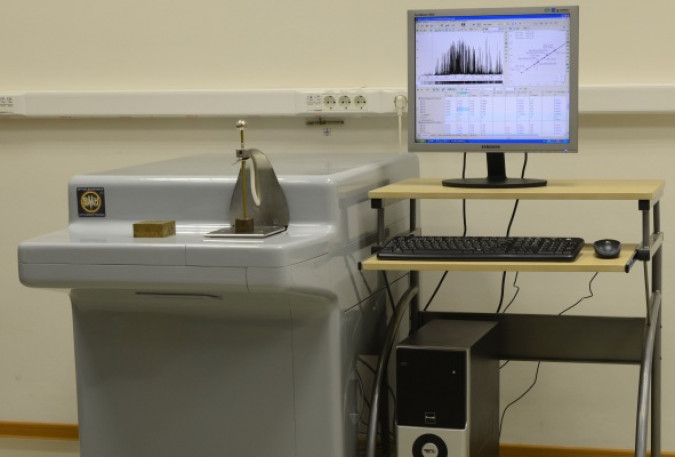
Vacuum Spectrometer Favorite
Vacuum spectrometers are designed for rapid analysis of alloys based on iron, copper, aluminum and other metals in factory and research laboratories, including the determination of elements having analytical lines in the field of vacuum ultraviolet (VUV) (for example, S, P and C in steels).
VMK OPTOELEKTRONIKA
Novosibirsk
Produced in: Novosibirsk
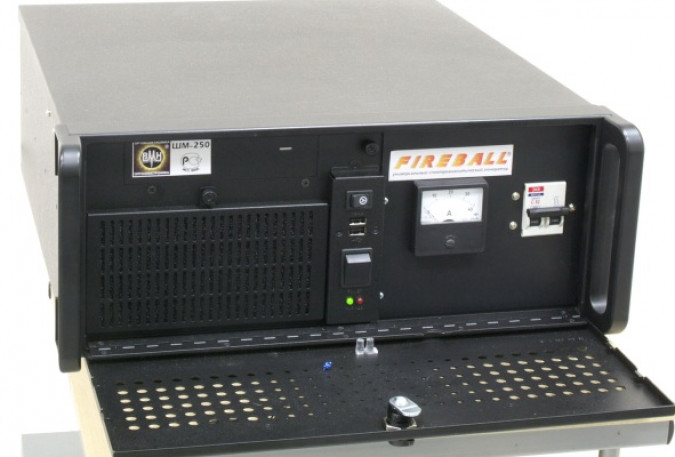
Spectroanalytical generator "Ball lightning"
The generator is designed to produce an electric arc and spark discharge in atomic emission spectral analysis installations. The generator is designed specifically for use in spectral analysis of samples of complex composition for simultaneous determination of impurity and alloying components in a wide range of concentrations.
VMK OPTOELEKTRONIKA
Novosibirsk
Produced in: Novosibirsk

Multichannel analyzer of atomic emission spectra of MAES
The MAES analyzer is a modern means of measuring the intensities of spectral lines and then calculating the concentrations of the elements to be determined.
VMK OPTOELEKTRONIKA
Novosibirsk
Produced in: Novosibirsk

Enzymes for biotechnology
from
1 350 ₽
Field of application:
Cloning of restriction fragments. Connecting DNA fragments with blunt ends.
BIOLABMIKS
Novosibirsk
Produced in: Novosibirsk

MAES Analyzer for Scintillation
MAES analyzers for recording atomic emission spectra with a time resolution of 1 ms are based on highly sensitive photodiodes and a special switching board for simultaneous reading of several sections of the spectra. The assembly of the rulers is installed on the "Grand" spectrometer.
A " Flow" or twin-jet arc plasmatron is used to excite the atomic emission spectra of powder samples.
The ATOM software registers the selected spectral lines and provides their processing according to the specified algorithms, taking into account the number and brightness of flashes (i.e. particle size).
Recording the spectra of powder samples with a large time resolution makes it possible to estimate the number and size of individual particles, identify their composition and determine the concentrations of elements in each particle, promptly assess the uniformity of the distribution of certain elements to be determined and expand the possibilities of spectral analysis without significant changes in sample preparation.
Main application areas:
mass analysis of powder geological samples by scintillation to determine gold, silver, platinum group metals, iridium, rhodium, etc. with detection limits up to 0.01 g/t;
qualitative determination of the composition of inclusions and mineral particles.
VMK OPTOELEKTRONIKA
Novosibirsk
Produced in: Novosibirsk
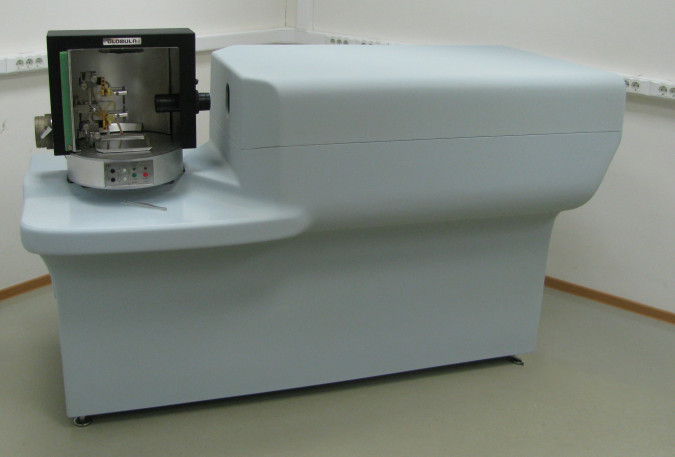
Atomic Emission Complex "Grand Globula"
Atomic Emission Complex "Grand Globula" includes a spectrometer "Grand", a spectroanalytic generator "Ball Lightning" and a tripod "Globula". It allows the analysis of various substances and materials in arc and spark discharges in air, for example according to GOST 17818.15-90 "Graphite. Spectral analysis method", GOST 9717.1-82 "Copper. A method of spectral analysis based on metallic standard samples with photoelectric spectrum registration" and other MVIS.
VMK OPTOELEKTRONIKA
Novosibirsk
Produced in: Novosibirsk
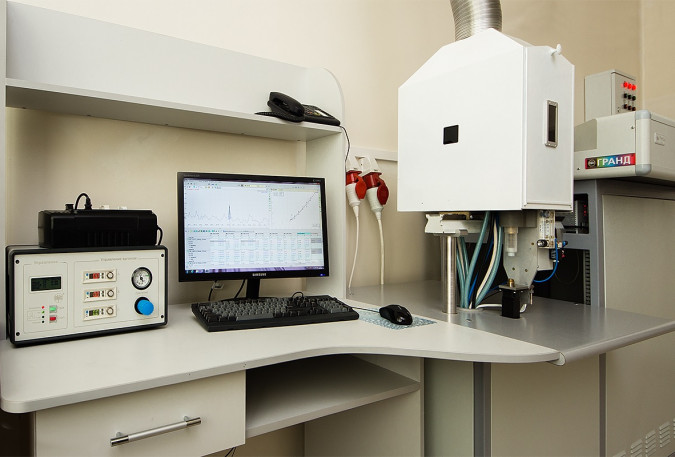
Two-jet arc plasmatron "Torch"
The plasmatron is designed for direct atomic emission spectral analysis of powder samples. The excitation of atoms occurs in a DC argon arc plasma. Weak matrix effects and low detection limits make it possible to use this excitation source for the analysis of various samples, both with mineral and organic matrix.
VMK OPTOELEKTRONIKA
Novosibirsk
Produced in: Novosibirsk
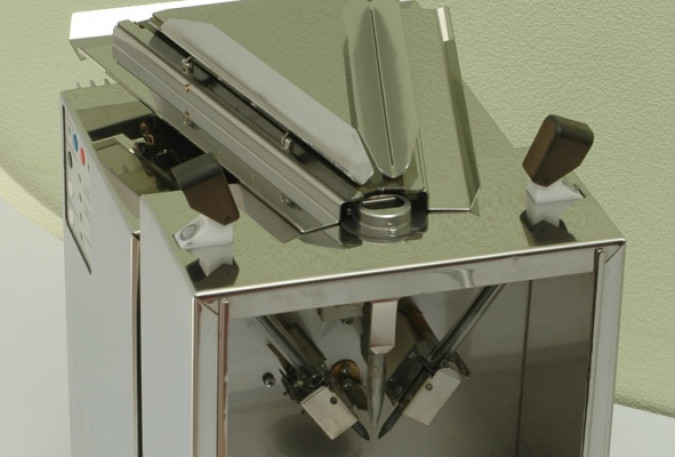
Electric arc installation for the analysis of powder samples by the method of spillage injection "Stream"
The installation is designed to excite atomic emission spectra of powder samples in an electric arc by the spillage-injection method. It provides high performance of routine analyses, has a low consumption of graphite electrodes and is used in conjunction with any spectral devices – "Grand", STE-1, DFS-458, MFS-8, PGS-2, etc.
VMK OPTOELEKTRONIKA
Novosibirsk
Produced in: Novosibirsk
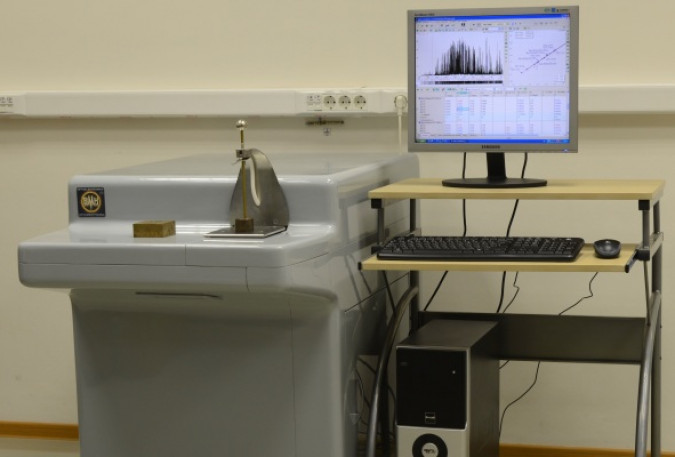
Grand Expert Vacuum Spectrometer
Vacuum spectrometers are designed for rapid analysis of alloys based on iron, copper, aluminum and other metals in factory and research laboratories, including the determination of elements having analytical lines in the field of vacuum ultraviolet (VUV) (for example, S, P and C in steels).
VMK OPTOELEKTRONIKA
Novosibirsk
Produced in: Novosibirsk
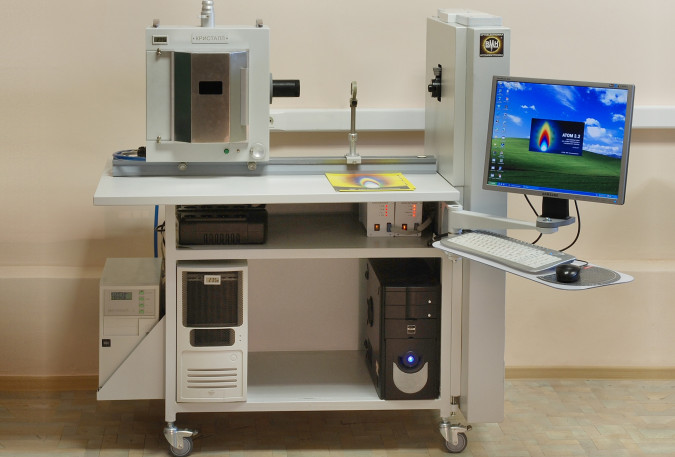
Universal spectrometer "Express"
The spectrometer is designed to perform quantitative and qualitative spectral analysis of various substances and materials (powders, metals, solutions) in factory and research laboratories.
The spectrometer is compact due to the vertical arrangement of the Paschen-Runge optical system. It consists of two MAES analyzers with 10 lines of photodiodes installed on a circle with a radius of 520 mm, a non-classical concave diffraction grating, a special table with a built-in computer and a spectrum excitation source.
VMK OPTOELEKTRONIKA
Novosibirsk
Produced in: Novosibirsk
